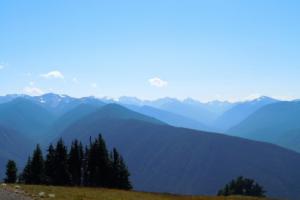WaterPutting a price on groundwater, other natural capital
Most people understand that investing in the future is important, and that goes for conserving nature and natural resources, too. But in the case of investing in such “natural” assets as groundwater, forests, and fish populations, it can be challenging to measure the return on that investment. A Yale-led research team has adapted traditional asset valuation approaches to measure the value of such natural capital assets, linking economic measurements of ecosystem services with models of natural dynamics and human behavior.

Yale University seeks to valuate natural reasources. // Source: yale.edu
Most people understand that investing in the future is important, and that goes for conserving nature and natural resources, too. But in the case of investing in such “natural” assets as groundwater, forests, and fish populations, it can be challenging to measure the return on that investment. A Yale-led research team has adapted traditional asset valuation approaches to measure the value of such natural capital assets, linking economic measurements of ecosystem services with models of natural dynamics and human behavior.
Yale University says that this innovation will enable policymakers to better evaluate conservation and natural resource management programs, make apples-to-apples comparisons between investing in conversation of natural capital and other investments, and provides a component critical to measuring sustainability.
Writing in the Proceedings of the National Academy of Sciences, the authors demonstrate how to price natural capital using the example of the Kansas High Plains’ groundwater aquifer — a critical natural resource that supports the region’s agriculture-based economy. According to their analysis, groundwater extraction, and changes in aquifer management policies, driven largely by subsidizes and new technology, reduced the state’s total wealth held in groundwater by $110 million per year between 1996 and 2005. That is a total of $1.1 billion.
Measuring the value of natural capital can allow governments and business to redefine conservation expenditures as “investments,” said Eli Fenichel, an assistant professor at the Yale School of Forestry & Environmental Studies and lead author of the study.
“The idea that we can actually measure changes in the value of natural capital is really important,” he said. “It shows that in places like Kansas, where groundwater is a critically important asset, there is a way to measure and keep tabs on these resources as part of a larger portfolio. And in a world where data is more and more available, it should be possible to do this more often. I think that bodes well for guiding policies aimed at maintaining all of society’s wealth.”
The study’s authors say that achieving sustainability requires that wealth — including the value of natural capital, human capital, as well more traditional contributors to wealth — not decline over time. Indeed, such ideas have been advanced by the United Nations and the World Bank. However, a problem with measuring such “inclusive” or “comprehensive” wealth has been measuring the prices of natural capital.
